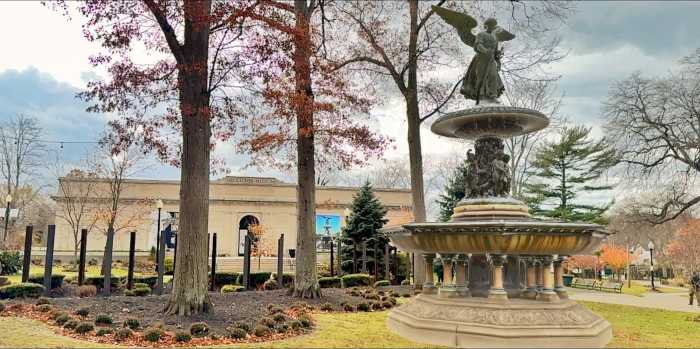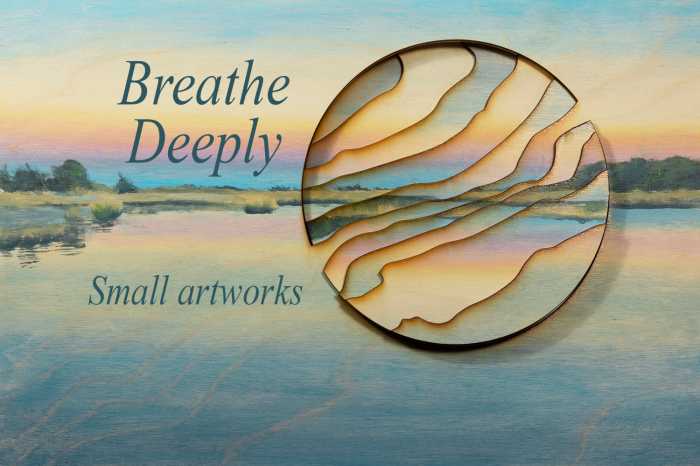In response to the opioid crisis, Garden City-based nonprofit Family & Children’s Association (FCA) opened THRIVE Suffolk, Long Island’s first recovery community and outreach center, in Hauppauge in 2017.
Since then, new THRIVE centers have been added in Westbury in 2019 and Riverhead in 2021, expanding access to the free, nonclinical, peer-led programs, which serve people at all stages of the recovery journey. Complemented by extensive community outreach services, THRIVE — which stands for Transformation, Healing, Recovery, Inspiration, Validation, Empowerment — now serves more than 18,000 individuals throughout Long Island each year. While drug addiction treatment is vital, it is just one component of the recovery process, says Jeffrey L. Reynolds, Ph.D., president and CEO of FCA.
“If I was running and I fell in a pothole and broke my leg, EMS would take me to the hospital, where they would put in pins and bolts — that is the treatment phase. But then I would need to learn to walk and run again,” he says. “THRIVE is designed to provide an extension of the continuum beyond the treatment phase, and to expand the scaffolding of support as people go through their journey. It might include strategies for staying sober, sitting down with family members to try to rebuild damaged relationships, writing a resume to get back in the workforce, or coming in and hanging out with other folks who share a common goal of not using substances.”
THRIVE’s team of certified recovery peer advocates — who have all journeyed through addiction and recovery themselves — use their lived experiences as well as their extensive training to guide people on the path to recovery. This includes guidance with creating a recovery plan, navigating systems like treatment programs, housing and other community services, and developing strategies for rebuilding a full, healthy life.
Participants can attend 12-step programs such as AA or NA or alternative programs such as Recovery Dharma, SMART Recovery, or harm reduction and medication-supported meetings. Besides these structured activities, THRIVE offers a full calendar of wellness activities such as hiking or yoga, workshops for job readiness and other life skills, and substance-free social events, such as open-mic and game nights.

“We put a focus on the riskier times of year, when the use of drugs and alcohol are more in vogue and people may need extra support to stay on their path,” Reynolds says. For instance, there’s a sober Super Bowl party and substance-free events for holidays such as St. Patrick’s Day and New Year’s Eve.
Wellness and social activities vary from site to site and are based on the interests of the participants, says Jaymie Kahn-Rapp, L.M.H.C., assistant vice president of harm reduction and recovery for FCA.
“Everybody has different goals and needs, and we meet them where they are,” she says.
This includes bringing THRIVE to people who are unable to get to a center or who are not comfortable or willing to come into one. THRIVE Everywhere offers a robust calendar of wellness events such as boating charters, bowling, ice skating, drum circles, movie nights and outdoor retreats. The brightly colored THRIVE Everywhere van also travels to provide recovery coaching as well as Narcan training and other services. The van was stationed at several events in a recent week, including a community gardening activity and a National Night Out Against Crime event.
The fact that THRIVE programs are peer led is impactful in getting people to engage with services, Kahn-Rapp says.
“Participants know that the peers have stood where they stand, and that they understand their struggle because they have walked the path themselves,” she says.
According to Reynolds, “People exchange numbers with other participants, and there’s a robust circle of support, with people leaning on each other. Recovery isn’t easy, and the reality is no one does it alone. A lot of people owe their sobriety to not only good treatment but also peers.”
The THRIVE Centers are open seven days a week, and there’s also a 24-7 hotline.
In 2017 — when the U.S. Department of Health and Human Services declared a public health emergency due to the national opioid crisis — more than 70,000 people nationwide and nearly 4,000 New Yorkers died of a drug overdose. Drug overdose deaths, most of which are from opioids such as heroin or fentanyl, continued to soar in the years since. But recent numbers indicate a corner may have been turned.
Provisional data from the CDC’s National Center for Health Statistics estimate drug overdose deaths for 2024 at 80,391, about a 27% decrease from the 110,037 deaths estimated for 2023. The decline is even sharper in New York State, with preliminary figures estimating 4,567 overdose deaths for 2024, down about 32% from the previous year’s tally of 6,688.
But Reynolds cautions it’s not time to take the foot off the gas.
“The decrease comes from a mix of things, including better access to treatment and support for people in recovery and the wider availability of Narcan,” he says. “But the gains are somewhat precarious, and without sustained effort to keep the momentum going, we can easily wind up right back where we were. Overdoses are preventable deaths, and in my world even one overdose is too many. We must continue to expand services based on community needs and make them available on demand.”
To inquire about THRIVE services for yourself or a loved one, contact 631-822-3396 or visit thriveli.org.


































